36. A 'twisting on the
thigh' could possibly be at η
Ophiuchi (Sabik, the Preceding One):
Hiro. 1. A deity invoked when praying for rain (meaning
uncertain). 2. To twine tree fibres (hauhau, mahute) into
strings or ropes.
Ohirohiro, waterspout
(more exactly pú ohirohiro), a column of water which
rises spinning on itself. Vanaga. To spin, to twist. P
Mgv.: hiro, iro, to make a cord or line in the
native manner by twisting on the thigh. Mq.: fió, hió,
to spin, to twist, to twine. Ta.: hiro, to twist. This
differs essentially from the in-and-out movement involved in
hiri 2, for here the movement is that of rolling on the axis
of length, the result is that of spinning. Starting with the
coir fiber, the first operation is to roll (hiro) by the
palm of the hand upon the thigh, which lies coveniently exposed
in the crosslegged sedentary posture, two or three threads into
a cord; next to plait (hiri) three or other odd number of
such cords into sennit. Hirohiro, to mix, to blend, to
dissolve, to infuse, to inject, to season, to streak with
several colors; hirohiro ei paatai, to salt. Hirohiroa,
to mingle; hirohiroa ei vai, diluted with water.
Churchill. Ta.: Hiro, to exaggerate. Ha.: hilohilo,
to lengthen a speech by mentioning little circumstances, to make
nice oratorial language. Churchill.
Whiro
'Steals-off-and-hides'; also [in addition to the name of
Mercury] the universal name for the 'dark of the Moon' or the
first day of the lunar month; also the deity of sneak thieves
and rascals. Makemson.

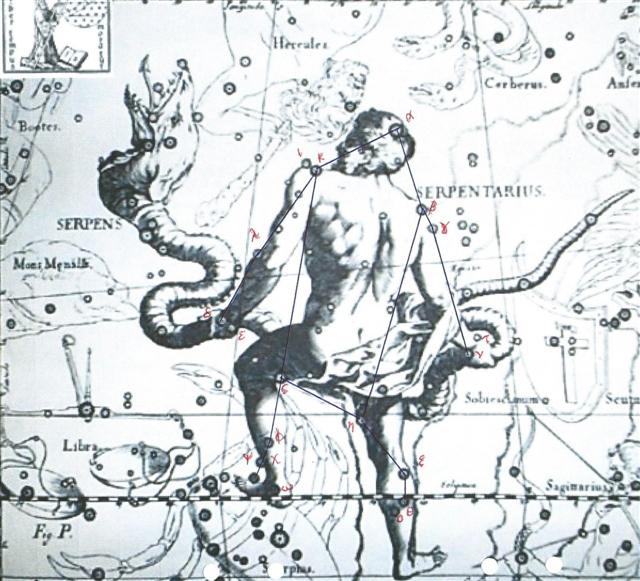
For in the Golden Age of the Bull (*64 precessional days
earlier) the planet Mercury would have been observed at
the SEPTEMBER equinox.
... Ganz ähnlich is der Name 'Gott von Duazag'
des Gottes Nabū ... zu erklären.
Er bezeichnet ihn als den Gott des
Wachtstums, welches als aus dem Osten stammend
betrachtet wird, weil die Sonne, die das Wachstum
bringt, im Osten aufgeht. Dass aber
Nabū als Ost-Gott aufgefasst wurde, hängt damit
zusammen, dass sein Stern, der Mercur, nur im Osten oder
Westen sichtbar ist ...
|
Hawaiian Islands |
Society Islands |
Tuamotus |
New Zealand |
|
Ukali
or
Ukali-alii
'Following-the-chief' (i.e. the Sun)
Kawela 'Radiant' |
Ta'ero
or
Ta'ero-arii
'Royal-inebriate' (referring to the eccentric
and undignified behavior of the planet as it
zigzags from one side of the Sun to the other) |
Fatu-ngarue
'Weave-to-and-fro'
Fatu-nga-rue
'Lord of the Earthquake' |
Whiro
'Steals-off-and-hides'; also the universal name
for the 'dark of the Moon' or the first day of
the lunar month; also the deity of sneak thieves
and rascals. |
|
 |
From glyph number 185 and
heliacal Antares together
with
heliacal Marfik (λ
Ophiuchi) at
November 25 (265 + 64), to
η Ophiuchi (*259) there
should be 259 -249 = 10
glyphs.
Or maybe we should
begin to count from some
earlier point, e.g. from
the grasping eft hand (Yed)
of the Serpent Carrier - at
the first Greek lettered
star in the constellation:
259 - 245 = 14:
|
Egyptian hand |
 |
Phoenician
kaph |
 |
Greek
kappa |
Κ (κ) |
|
Kaph is thought to have
been derived from a pictogram of a hand (in both
modern Arabic and modern Hebrew, kaph
means palm/grip) ...
... The
manik, with the tzab, or serpent's
rattles as prefix, runs across Madrid tz. 22 ,
the figures in the pictures all holding the
rattle; it runs across the hunting scenes of
Madrid tz. 61, 62, and finally appears in all
four clauses of tz. 175, the so-called 'baptism'
tzolkin. It seems impossible, with all this, to
avoid assigning the value of grasping or
receiving. But in the final confirmation, we
have the direct evidence of the signs for East
and West. For the East we have the glyph
Ahau-Kin, the Lord Sun, the Lord of Day; for
the West we have Manik-Kin, exactly
corresponding to the term Chikin, the
biting or eating of the Sun, seizing it in the
mouth.



The pictures (from Gates) show
east, north, west, and south; respectively (the
lower two glyphs) 'Lord' (Ahau) and
'grasp' (Manik). Manik was the 7th
day sign of the 20 and Ahau the last ... |
 |
 |
 |
 |
|
Ga7-6 (175) |
Ga7-7 |
Ga7-8 (177 = 354
/ 2) |
Ga7-9 |
|
PLACE OF THE SUN: |
|
δ Cor. Borealis
(*239.5)
κ
Serpentis (239.3), δ Cor. Borealis,
TIĀNRŪ = μ
Serpentis
(239.5),
χ Lupi, (239.6), ω Serpentis (239.7),
BA (Pa) = ε
Serpentis,
χ Herculis (239.8). κ Cor. Borealis, ρ Serpentis
(239.9) |
λ Librae
(*240.0) + MARS
Nov 25 AD 2023 (329)
λ
Librae (240.0),
β Tr. Austr. (240.3),
κ Tr. Austr.
(240.4),
ρ Scorpii (240.8) |
Iklīl al Jabhah-15 (Crown of the Forehead)
/
Anuradha-17 (Following Rādhā)
/
Room-4 (Hare)
VRISCHIKA
ξ
Lupi, λ Cor. Bor.(241.1),
ZHENG = γ
Serpentis,
θ
Librae
(241.2),
VRISCHIKA = π Scorpii
(241.3), ε Cor. Borealis (241.5),
DSCHUBBA
(Front of Forehead) = δ Scorpii (241.7),
η Lupi (241.9) |
ρ Cor. Borealis
(*242.4). ι Cor. Borealis (*242.5)
SCHEDIR
υ
Herculis (242.3),
ρ Cor. Borealis (242.4), ι Cor. Borealis (242.5),
θ Draconis (242.6), ξ Scorpii
(242.7)
|
|
Nov 15 |
16 (320
= 329 - 9) |
17 |
18 |
|
"Oct 5 |
6 (*199 = *249 -
*50) |
7 (280 = 257 +
23) |
8 (*201) |
|
SEPT 12 (365 -
100) |
13 (256 = 320 -
64) |
14 (*177) |
15 |
|
... In other words, the ancient Druidic religion
based on the oak-cult will be swept away by
Christianity and the door - the god Llyr - will
languish forgotten in the Castle of Arianrhod, the
Corona Borealis. This helps us to understand
the relationship at Rome of Janus and the White
Goddess Cardea who is ... the Goddess of Hinges who
came to Rome from Alba Longa. She was the hinge on
which the year swung - the ancient Latin, not the
Etruscan year - and her importance as such is
recorded in the Latin adjective cardinalis -
as we say in English 'of cardinal importance - which
was also applied to the four main winds; for winds
were considered as under the sole direction of the
Great Goddess until Classical times ...
...
Early India knew it [Scorpius] as
Āli, Viçrika, or Vrouchicam, -
in Tamil, Vrishaman; but later on Varāha
Mihira said Kaurpya, and Al Birūni, Kaurba,
both from the Greek Scorpios. On the Cingalese
zodiac it was Ussika
... Taurus was the
Cingalese Urusaba, the early Hindu Vrisha,
Vrishan, or Vrouchabam, - in the Tamil
tongue, Rishabam; but subsequently Varāha
Mihira gave it as Taouri, his rendering of
Taurus, and Al Birūni, in his India, as
Tāmbiru ...
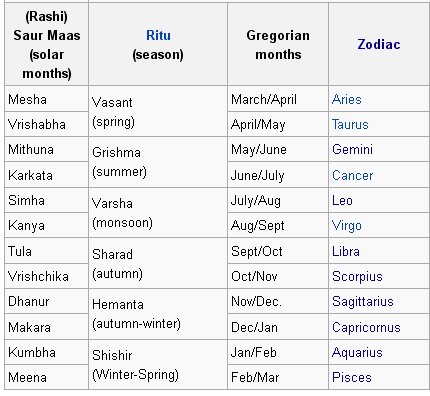
Vrischika (Scorpius) =
Vrishabha (Taurus) + 6 months. |
|
THE NAKSHATRA
VIEW: |
PORRIMA |
ZAURAK (*58) |
*59 |
COR CAROLI |
|
May 17 (137 = 122
+ 15) |
18 |
19 |
20 (140) |
|
'April 20 (110 =
95 + 15) |
21 |
22 |
23 |
|
"April 6 (96 = 81
+ 15) |
7 |
8 |
9 (99 = 140 - 41) |
|
MARCH 14 (73 = 58
+ 15) |
15 (365 + 74 =
439) |
*360 = *177 +
*183 |
17 (*361 → 19 *
19) |
 |
Although the group ξ, ψ, and χ
Scorpii could rather belong in the Serpent Carrier. Especially as the Breast of Cassiopeia (Schedir) culminated
in the day of ξ Scorpii (*242). And, by looking at the
drawing of Hevelius we can indeed find this was a perception
also by him.
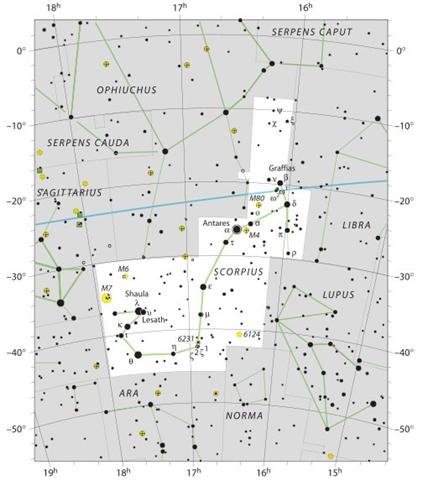
|
Egyptian djed |
 |
Phoenician
sāmekh |
 |
Greek
xi |
Ξ (ξ) |
|
... In rongorongo times the last
Greek lettered star in
Orion (ξ)
rose with the Sun in June 21. The letter seems to
have originated from the Phoenician letter samekh
(tent peg, supporting prop), which in turn may have
been derived from the ancient Egyptian djed
column ...
 |
 |
 |
 |
 |
|
Ga7-10 |
Ga7-11 |
Ga7-12 (181) |
Ga7-13 |
|
PLACE OF THE
SUN: |
|
16h (243.5)
ACRAB (Scorpion) = β Scorpii,
JABHAT AL ACRAB (Forehead of the Scorpion) = ω
Scorpii
(243.3), θ Lupi,
RUTILICUS = β Herculis
(243.5),
MARFIK (Elbow) = κ Herculis
(243.7),
φ Herculis (243.8) |
ψ
Scorpii
(244.6),
LESATH (Sting) =
ν
Scorpii
(244.8) |
χ
Scorpii
(245.1),
YED PRIOR (Hand in Front) =
δ
Ophiuchi,
δ
Tr.
Austr. (245.5) |
YED POSTERIOR (Hand Behind) =
ε
Ophiuchi,
RUKBALGETHI SHEMALI (Northern Knee of the Giant)
=
τ
Herculis
(246.6).
δ Apodis (246.7),
ο
Scorpii (246.8) |
|
Nov 19 |
20 (324 = 260
+ 64) |
21 (*245) |
22 |
|
"Oct 9
(*202) |
10 |
11 (284 = 325 - 81) |
12 |
|
SEPT 16 |
17 (260 = 80
+ 180) |
18 |
19 (*182) |
 |
From Dschubba
(Front of Forehead) = δ Scorpii (*241.7) to η
Ophiuchi (*259.7) there were
were *18.0 right ascension
days. The sum of the number
of signs on the Phaistos
disc also 'happens to be'
118 +123 = 241.
 |
 |
 |
 |
 |
 |
|
Ga7-14 (183) |
Ga7-15 |
Ga7-16 |
Ga7-17 |
Ga7-18 |
Ga7-19 (188) |
|
PLACE OF THE SUN: |
|
Heart-5 (Fox)
σ Scorpii
(247.0),
HEJIAN = γ Herculis
(247.2),
ψ
Ophiuchi
(247.7) |
ρ
Ophiuchi (248.1),
KAJAM (Club) = ω Herculis
(248.3),
χ Ophiuchi
(248.5),
SHE LOW (Market Tower) =
υ Ophiuchi, Tr.
Austr. (248.7),
ζ Tr. Austr. (248.8) |
Al Kalb-16 (The
Heart)
/
Jyeshtha-18 (Eldest)
/
ANA-MUA-1 (Entrance
pillar)
ANTARES
= α Scorpii
(249.1),
MARFIK (Elbow) = λ
Ophiuchi,
φ Ophiuchi
(249.5),
ω Ophiuchi
(249.8)
Dec 7 AD 2023 (*261
→ 9 * 29) MARS |
γ Apodis (250.1), σ
Herculis (250.3), θ Tr.
Austr. (250.6),
τ Scorpii (250.7) |
HAN = ζ Ophiuchi
(251.0) |
ζ Herculis, η Tr. Austr.
(252.1), η Herculis, β
Apodis (252.5) |
|
Nov 23 (327) |
24 |
25 (265 + 64) |
26 |
27 |
Nov
28 (332) |
|
"Oct 13 |
14 |
15 (265 + 23) |
16 |
17 |
18 |
|
SEPT 20 |
21 (*184) |
EQUINOX |
23 |
24 |
25 (268) |
 |
The right ascension day number fraction .7
was also at
μ
Scorpii (Deneb-Akrab, the
Tail of the Crab), precisely *5.0
before Sabik:(The Preceding
One):
 |
 |
 |
 |
 |
|
Ga7-20 |
Ga7-21 |
Ga7-22
(191) |
Ga7-23 |
Ga7-24 |
|
PLACE OF THE SUN: |
|
ATRIA =
α
Tr. Austr.
(253.9) |
Tail-6
(Tiger)
WEI (Tail) =
ε
Scorpii,
η
Arae (254.3),
DENEBAKRAB =
μ
Scorpii
(254.7) |
ι Ophiuchi (255.3),
GRAFIAS = ζ Scorpii (255.4)
*214.0 = *255.4 - *41.4 |
κ Ophiuchi (256.2), ζ Arae
(256.5), ε Arae (256.8),
CUJAM (Club) = ε Herculi (256.9) |
No star listed (257) |
|
Nov 29 |
30 (*254) |
Dec 1 |
2 (4
* 84) |
3 |
|
"Oct 19 |
20 |
21 |
22 (295) |
23 (*216) |
|
SEPT 26 |
27 (270) |
28 |
29 |
30 (3 * 91) |
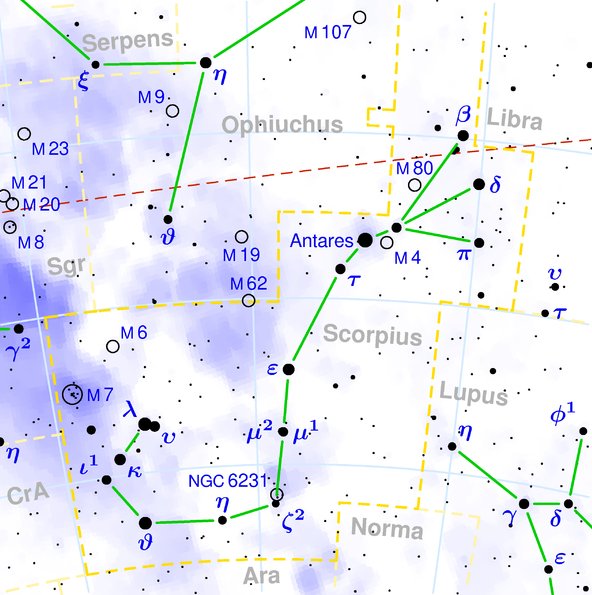 |
 |
 |
 |
 |
 |
 |
|
Ga7-25 |
Ga7-26 (195) |
Ga7-27 |
Ga7-28 |
Ga7-29 |
Ga7-30 (199) |
|
PLACE OF THE SUN: |
|
17h (*258.7)
ARRAKIS =
μ
Draconis
(258.7) |
Mula-19 (The Root)
SABIK (The Preceding One) =
η
Ophiuchi (259.7),
η
Scorpii (259.9) |
NODUS I =
ζ
Draconis (260.0),
π
Herculis (260.7),
RAS ALGETHI =
α
Herculis
(260.8)
|
SARIN =
δ
Herculis (261.0),
ο
Ophiuchi (261.4)
*220.0 = *261.4 - *41.4 |
ξ
Ophiuchi (262.2),
θ
Ophiuchi,
ν
Serpentis,
ζ,
ι
Apodis (262.4),
ι
Arae (262.8),
ρ
Herculis (262.9) |
β, γ Arae (263.3), κ Arae
(263.5), σ Ophiuchi (263.6) |
|
Dec 4 |
5 |
6 (*260) |
7 |
8 (342) |
9 |
|
"Oct 24 |
25 |
26 |
27 (300) |
28 |
29 (*222) |
|
OCT 1 |
2 (*195) |
3 |
4 (277) |
5 |
6 |
|
... In
Bayer's Uranometria from
the year 1603 the Bird of
Paradise is depicted among the
constellations in the southern
sky. The name
Apus means 'without feet'.
The great paradise birds of East
India have exceedingly beautiful
feathers but very ugly feet.
When anciently the natives tried
to sell these birds to the
Europeans they therefore first
cut off their feet ...
|
time of rongorongo |
39 |
time of Bharani |
 |
 |
 |
 |
 |
 |
|
Ga5-6 (4 * 29) |
Ga5-7 |
Ga5-8 (118) |
Ga6-18 (158) |
Ga6-19 |
Ga6-20 (4 * 40) |
|
Sept 17 |
(261 = 9 * 29) |
ο Virginis |
"Sept 18 |
α Apodis |
ZUBEN ELGENUBI |
|
March 18 |
(78 = 6 * 13) |
20 (*365) |
"March 19 |
20 (*365) |
BHARANI |
|
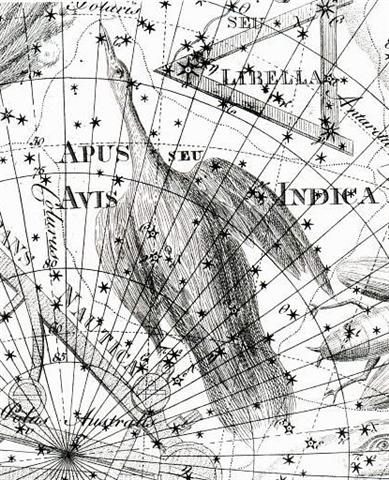
|























